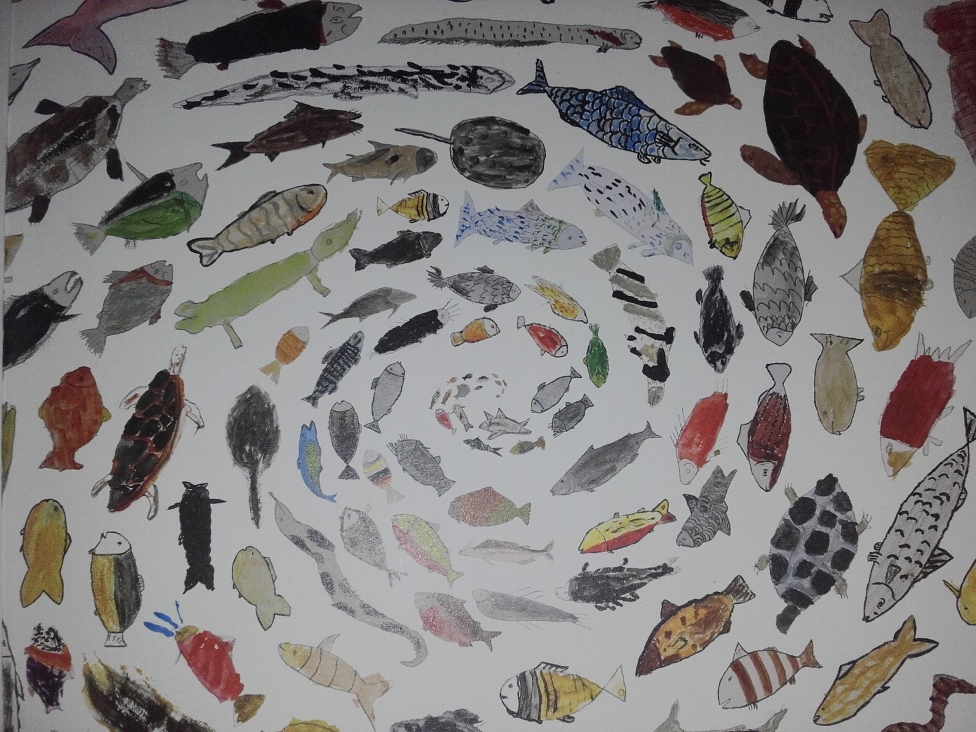
By Manolo Berjón and Miguel Ángel Cadenas*
We were coming to the end of a spiritual retreat with all the priests in the Vicariate of Iquitos. The group also included deacons who would soon be ordained to the priesthood. Before supper on the last day, while chatting in small, informal groups, we asked one of the deacons to tell us one of the stories he had heard from his grandparents. The narratives came one after another, drawing laughter from his listeners. We enjoyed the moment. Later, over supper, we asked, “Have you ever talked about these things in the seminary?” The answer was a resounding “No—never.” Ten years in the seminary, and they had never talked about their own traditions. “Have you ever talked in spiritual direction about the world inhabited by spirits?” we asked. Again, the response was blunt: “No—never.”
That incident occurred eight years ago; the next one happened in 2016. We were at the seminary and needed to download a video for a class. The Internet was slow, and it was taking longer than usual. One seminarian said, “Let’s leave the room, so it [the computer] isn’t embarrassed and can download the file.” When we came back to look at the computer again, it had downloaded the video.
October 2017: “My students at the university learn by memory,” a colleague said. “I’ve tried everything—focus groups, group work—but with no success. They almost never ask questions in class.” He added, more or less in the following words, although we don’t recall the exact phrasing, that the seminarians are better, because at least they express interest, but they still learn by rote.
The colleague is a beloved and charismatic priest who teaches in both the seminary and a private university in Iquitos, where the students are mainly middle-class urban youths who have studied in parochial schools. In the past few years, Peru’s Ministry of Education has made a great effort to eliminate rote learning. But apparently without success.
These are three specific incidents, but they reflect an entire world. The importance of narratives, a universe inhabited by spirits, objects that have feelings and the importance of memory are among the challenges facing seminarians. We believe that this makes formation a special venue, first, for perceiving the challenges this world poses, and second, for accompanying the seminarians as they search for answers.
This is not the first time Christians have faced sweeping challenges. When the Church opened itself up to the Hellenic world, it had to adapt its message. It shifted from narrative to concept. This dangerous move allowed evangelization of the pagans. Now indigenous peoples are asking us to make the shift from concept to narrative. It is not easy, but it can be done.
Memory is fundamental for all peoples. For Amazonian peoples, memory and affection are intertwined: telling stories, sharing food, living in the same house, maintaining close ties, being cared for as a child … these are vital experiences that indigenous people connect with affection and memory. It is said that indigenous peoples have “genealogical amnesia”—they remember only the generations with which they have shared life, only as far back as their great-grandparents. Anything that happened before their great-grandparents is woven into myth.
Behind this form of learning lies mimesis. There are auditory, visual and kinesthetic codes … which allow them to learn. A shaman can learn his icaro through dreams. A person learns to make a canoe by watching how his father works. A woman learns to tend crops by accompanying her mother from the time she is a girl and assimilating the songs for treating plants as if they are her own children. Learning comes from imitation. Knowledge is not stored only in the brain; it is dispersed throughout the body.
The same is true at school. However hard the Ministry of Education tries to eliminate rote learning, it will not succeed. Indeed, not only will the outcome be disastrous, but it will be contrary to indigenous ways of learning. Often, students even imitate each teacher’s handwriting, treating letters as icons, trying to copy the style as closely as possible, so as to incorporate all of the teacher’s knowledge into their own compendium.
Without a deeper understanding of the importance of mimesis, it will be difficult for students, including seminarians, to learn. Passivity and failure to ask questions do not necessarily indicate a lack of interest; if a student is interested, he or she will try to copy as closely as possible. Awakening interest is the first step in learning. We realize that this point merits further consideration; here we simply want to raise the issue. In earlier essays, we have noted that objects can behave as subjects. That’s how we can have a computer with feelings: “It’s embarrassed.”
If we do not take into account the world inhabited by spirits, where seminarians live, we cannot advance with formation. This is not entirely negative; far from it. Indigenous cosmologies are inhabited by spirits, some good and others evil. Hence the need for continual and constant blessings, the importance of holy water, of approaching a priest/religious (or evangelical pastor) to be blessed. Of talking with a priest or religious. Sometimes, when the conversation is over, you ask yourself, “What did they want?” One of three things: they wanted to tell you something and they told you without your realizing it (softly, under their breath or simply by their presence), or they came close to seek protection from evil spirits, or they wanted to learn something in secret, to increase their knowledge. Perhaps that closeness will make them dream, and the dream will give them a solution to their problem.
What we have described here, far from problems, can be opportunities. Oral tradition can lead us closer to a Christianity that is more narrative. The world inhabited by spirits to an enchanted universe—far from the the cold, desolate, Western one—and to trust in God. Objects, which are subjects, to an understanding of the importance of sacred image and all sacred objects, and to taking better care of them, including liturgical vestments, Bibles and missals…
Memory could bring us closer to people, avoiding Western solipsism and joining us with an interconnected network of people. Every time and culture has codes that we must understand in order to propose Christianity: indigenous Christianities. Complaining will get us nowhere; we must see the opportunities that these challenges offer us.
It would also be helpful to consider the importance of “being owner (dueño).” Personal autonomy, which is highly valued by indigenous peoples, must be one of the goals of formation. Insistence on canon law, which depends on Western concepts of the subject, although important, does not coincide with reality of Amazonia. Formation should emphasize having “the same attitude that is also yours in Christ Jesus” (Philippians 2:5), “uyari” / ”becoming attached,” as the Kukama say. Indigenous autonomy could be conducive to the formation of an Indigenous Christian subject who makes bold decisions in pursuit of evangelization, as Christians did in the early centuries.
This holds true for both celibate priests and “viri probati” [et mulieres?]. The formation of lay people also raises the same issues.
__
*Manolo Berjón and Miguel Ángel Cadenas are Augustinian missionaries in Iquitos.
___
Traduced by Barbara Fraser
